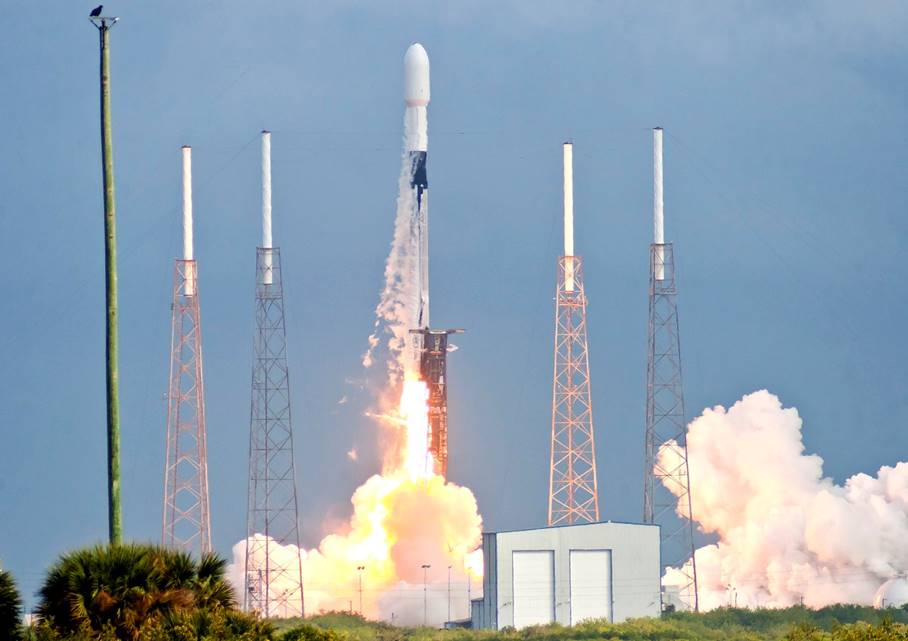
Falcon 9 Transporter-1 Launch, Photo Courtesy Liz Allen/Spaceline
Falcon 9 Launches Record-Setting Transporter-1 Payload
January 24, 2021 | Reported by Cliff Lethbridge
A SpaceX Falcon 9 rocket successfully launched the Transporter-1 payload at 10:00 a.m. EST today from Launch Pad 40 on Cape Canaveral Space Force Station. Launch was postponed one day due to bad weather at the launch site. The first stage booster employed today was being flown for the fifth time, having previously supported the Crew Dragon Demo-2 mission, the ANASIS-II mission, a Starlink mission and the CRS-21 mission. The booster was recovered today with a landing on the "Of Course I Still Love You" drone ship positioned on the Atlantic Ocean southeast of Miami, Florida.
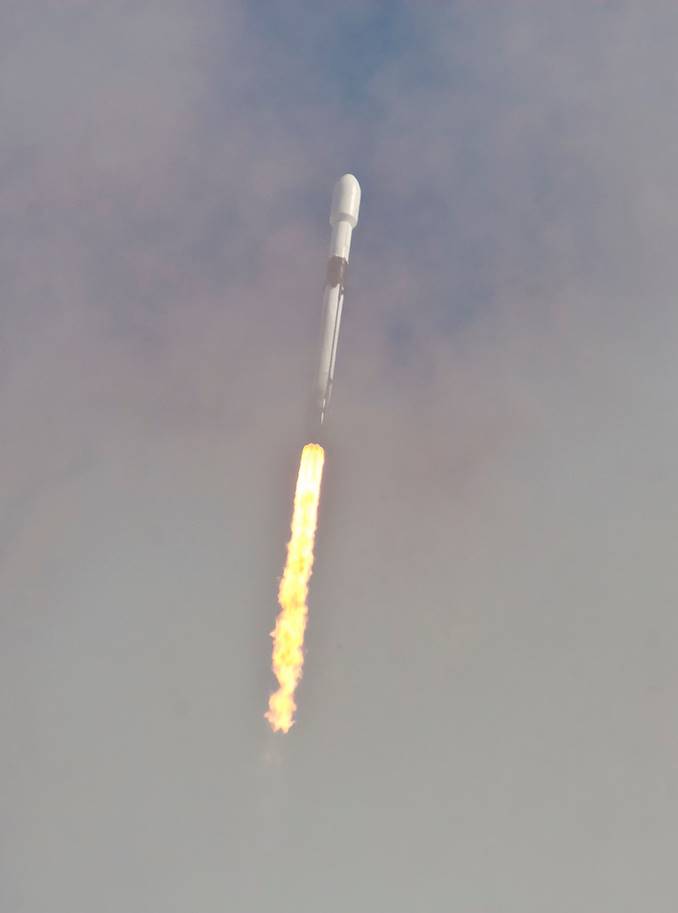
Falcon 9 Transporter-1 In Flight, Photo Courtesy Liz Allen/Spaceline
Transporter-1 represented the first dedicated Smallsat Rideshare Program launch for SpaceX. The payload carried 143 satellites representing government, industrial and educational sectors and including ten SpaceX Starlink broadband Internet satellites, the first ones to be launched on a polar orbit. The satellites launched today included cubesats, microsats and orbital transfer vehicles with weights ranging from a few pounds to a few hundred pounds. This was the largest number of satellites ever launched aboard a single rocket. Deployment of the satellites was completed about 90 minutes after launch.
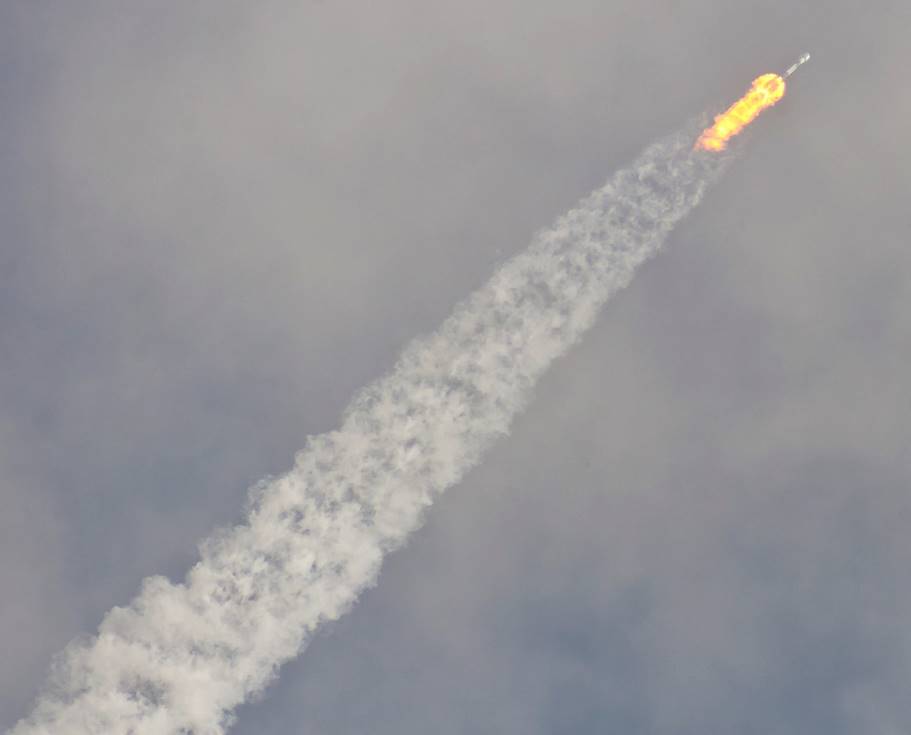
Falcon 9 Transporter-1 Downrange, Photo Courtesy Liz Allen/Spaceline
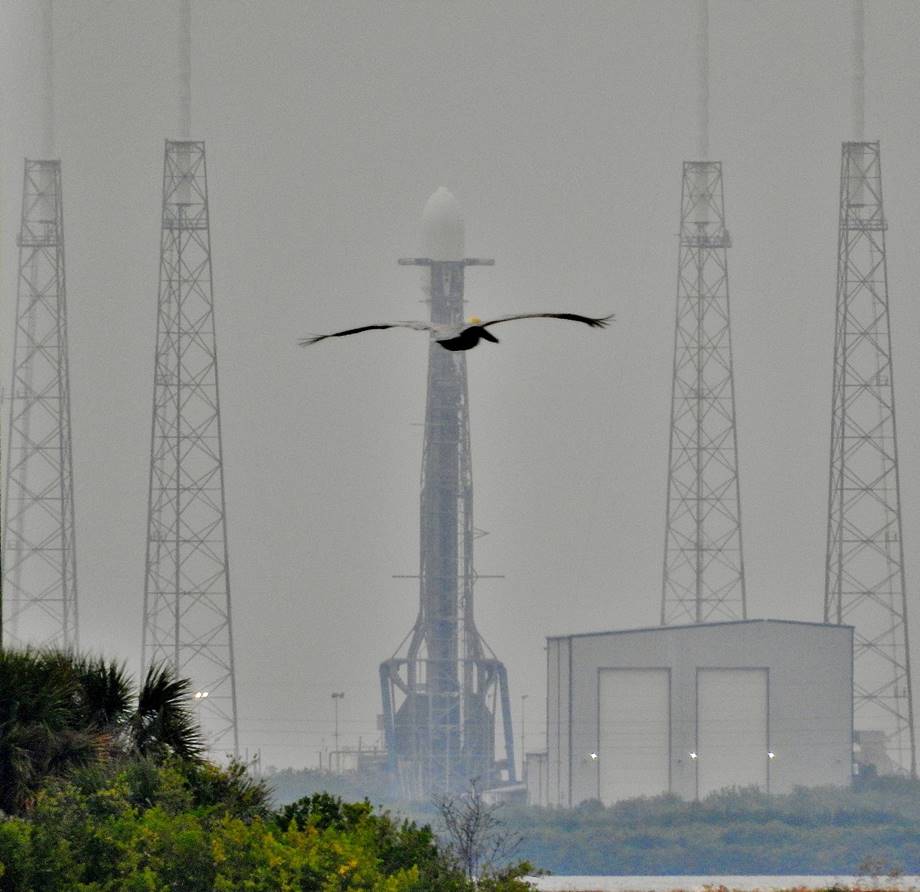
Falcon 9 Transporter-1 On Launch Pad 40, Photo Courtesy Liz Allen/Spaceline
Falcon 9 Transporter-1 Launch Scrubbed
January 23, 2021 | Reported by Cliff Lethbridge
Launch of a SpaceX Falcon 9 rocket scheduled for 9:40 a.m. EST today has been scrubbed due to bad weather at the launch site. The countdown was allowed to proceed until Launch Minus 30 seconds to allow the launch team to collect data until the last possible moment. Launch has been rescheduled for Sunday, January 24, 2021 during a launch window which extends from 10:00 a.m. to 10:22 a.m. EST. Launch will be from Launch Pad 40 on Cape Canaveral Space Force Station. The rocket will be carrying Transporter-1, a rideshare payload containing 143 satellites, which will set a world record for the most satellites launched aboard a single rocket.
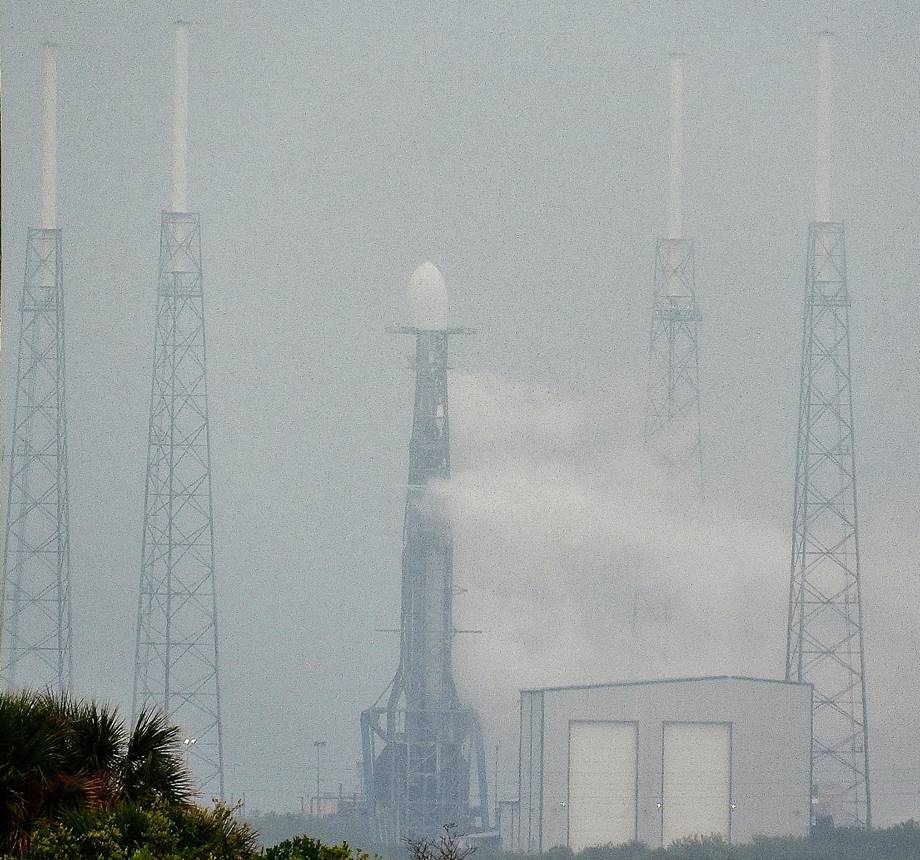
Falcon 9 Transporter-1 On Launch Pad 40, Photo Courtesy Liz Allen/Spaceline
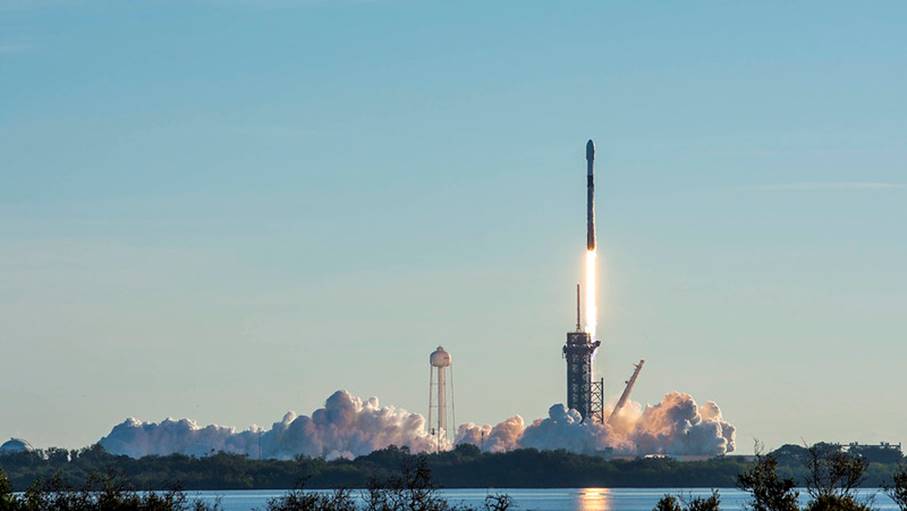
Falcon 9 Starlink V1.0-L16 Launch, Photo Courtesy SpaceX
Falcon 9 Launches 60 More Starlink Satellites
January 20, 2021 | Reported by Cliff Lethbridge
A SpaceX Falcon 9 rocket successfully launched 60 Starlink broadband satellites at 8:02 a.m. EST today from Launch Pad 39A at the Kennedy Space Center. The first stage booster employed today was being flown for a record eighth time, having previously supported the SXM-7 mission, the RADARSAT mission, the first Crew Dragon test flight and four Starlink missions. The booster was successfully recovered today with a landing on the "Just Read the Instructions" drone ship positioned on the Atlantic Ocean about 400 miles northeast of Cape Canaveral. One half of the payload fairing was being flown for the second time and the other half was being flown for the third time, both having previously supported Starlink missions. The payload was successfully deployed about an hour after launch, bringing the total number of Starlink satellites launched to date to 1,015. Starlink is a satellite constellation intended to provide space-based Internet service to unserved or underserved areas throughout the world. This was the 17th batch of Starlink satellites launched and the mission was designated Starlink V1.0-L16.
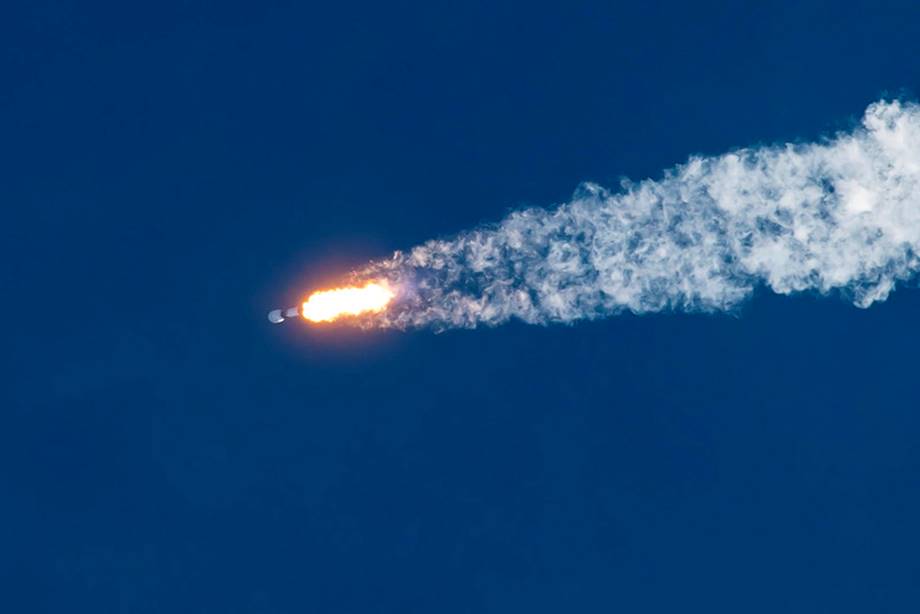
Falcon 9 Starlink V1.0-L16 In Flight, Photo Courtesy SpaceX
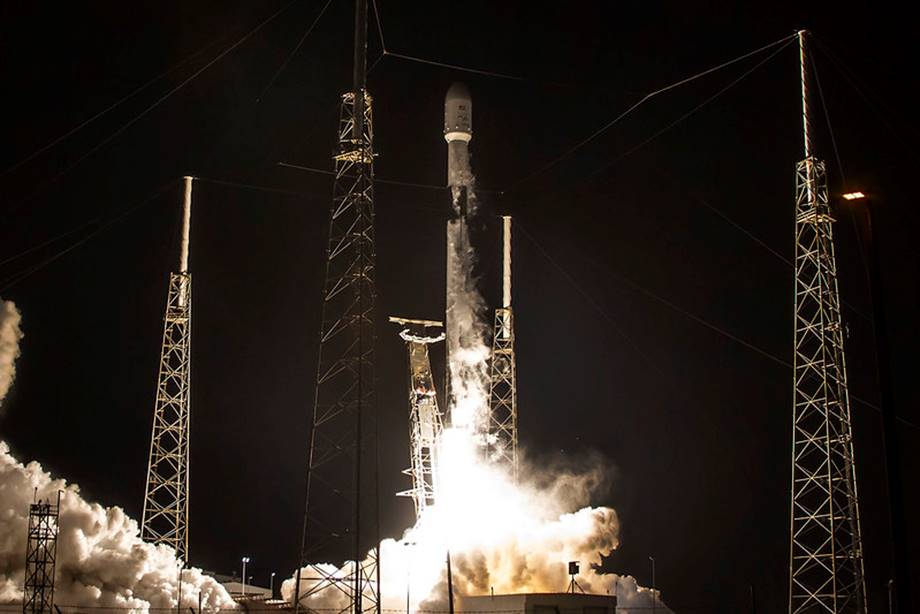
Falcon 9 Turksat-5A Launch, Photo Courtesy SpaceX
Falcon 9 Launches Turkish Satellite
January 7, 2021 | Reported by Cliff Lethbridge
A SpaceX Falcon 9 rocket successfully launched the Turksat-5A satellite at 9:15 p.m. EST today from Launch Complex 40 on Cape Canaveral Space Force Station. Launch was originally set for 8:28 p.m. EST but was postponed due to troubleshooting problems with a tracking station in Gabon. A decision was ultimately made to launch without using that facility. The first stage booster employed today was being flown for the fourth time, having previously supported the GPS III-SV03 mission and two Starlink missions. The booster was successfully recovered today with a landing on the "Just Read the Instructions" autonomous drone ship positioned on the Atlantic Ocean about 400 miles east of Cape Canaveral. This marked the 50th successful landing of a SpaceX first stage booster to date.
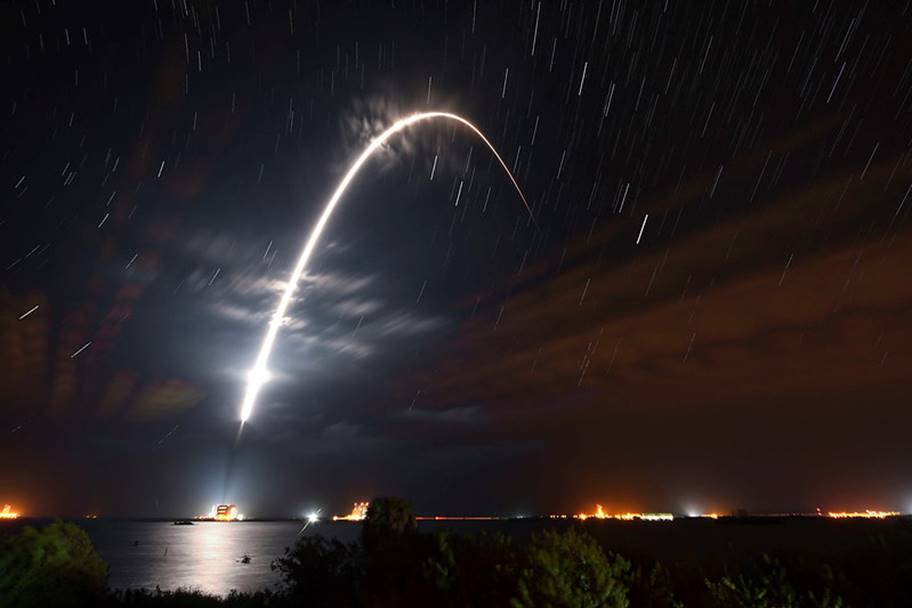
Falcon 9 Turksat-5A Streak Shot, Photo Courtesy SpaceX
The payload fairing halves employed today were each being flown for the second time, one having supported the GPS III-SV03 mission and the other the Anasis-II mission. These payload fairing halves were also set to be recovered on the Atlantic Ocean. The Turksat-5A satellite was successfully deployed on a geostationary transfer orbit about 30 minutes after launch. After several months of orbital maneuvering, the satellite will be placed in its permanent orbit at 31 degrees east longitude at an altitude of about 22,000 miles above Earth. The 7,500-pound Turksat-5A satellite is built by Airbus and is owned and operated by Turksat, a Turkish company. The satellite is intended to provide communications and television services to government and commercial users throughout Turkey, the Middle East, Europe, Africa, the Mediterranean Sea, the Aegean Sea and the Black Sea regions.
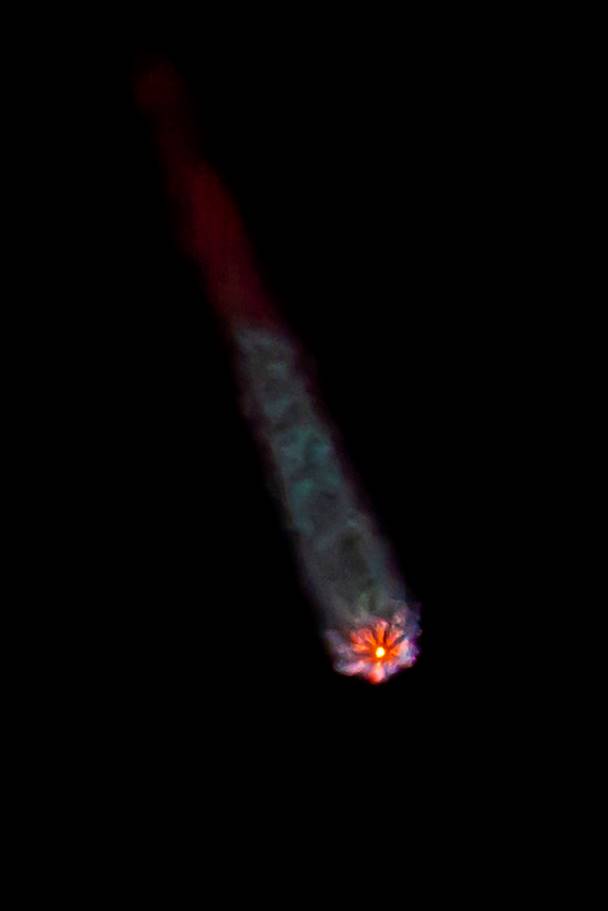
Falcon 9 Turksat-5A Downrange, Photo Courtesy SpaceX











